Despite their small size, bacteria have a powerful impact on the world around them. They achieve this via strength in numbers in biofilm communities. Beyond its clear fundamental and applied importance, studying biofilms represents a unique opportunity to combine approaches from disparate areas of microbiology, including rapidly evolving methods in molecular genetics, microfluidics, confocal microscopy, and ecological and evolutionary analysis. Major areas of prior and future work are noted below, and lab members are encouraged to pursue their own particular interests as well.
Mechanics and Population Biology of the Biofilm Matrix
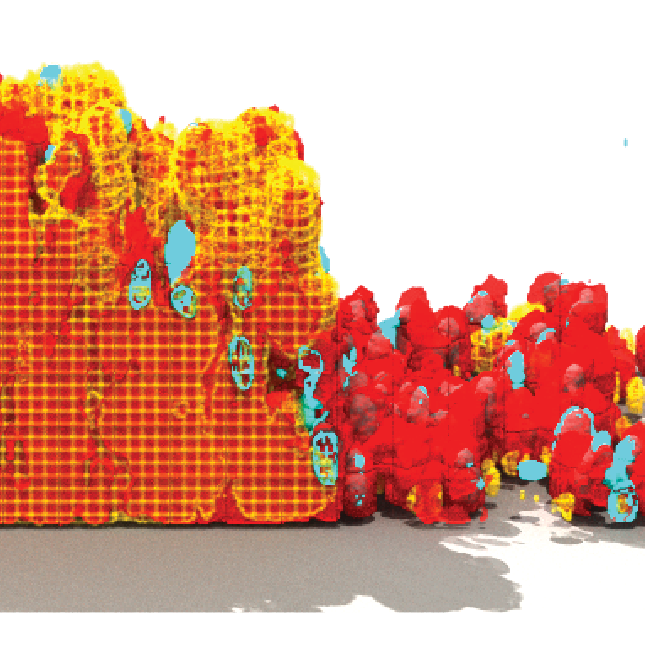
A defining feature of biofilms is the secretion of an adhesive extracellular matrix, composed of polysaccharide, protein, and DNA polymers. We are interested in how the mechanisms of biofilm production, and especially extracellular matrix secretion, influence the micro-ecology of cell-cell interactions, population dynamics, and community assembly. This topic bears on the fundamental biology of microbes, and on the pathogenesis of biofilm-dependent infections, which are caused by a diverse array of bacteria and fungi.
Bacteria-Phage Interactions in Biofilm Environments
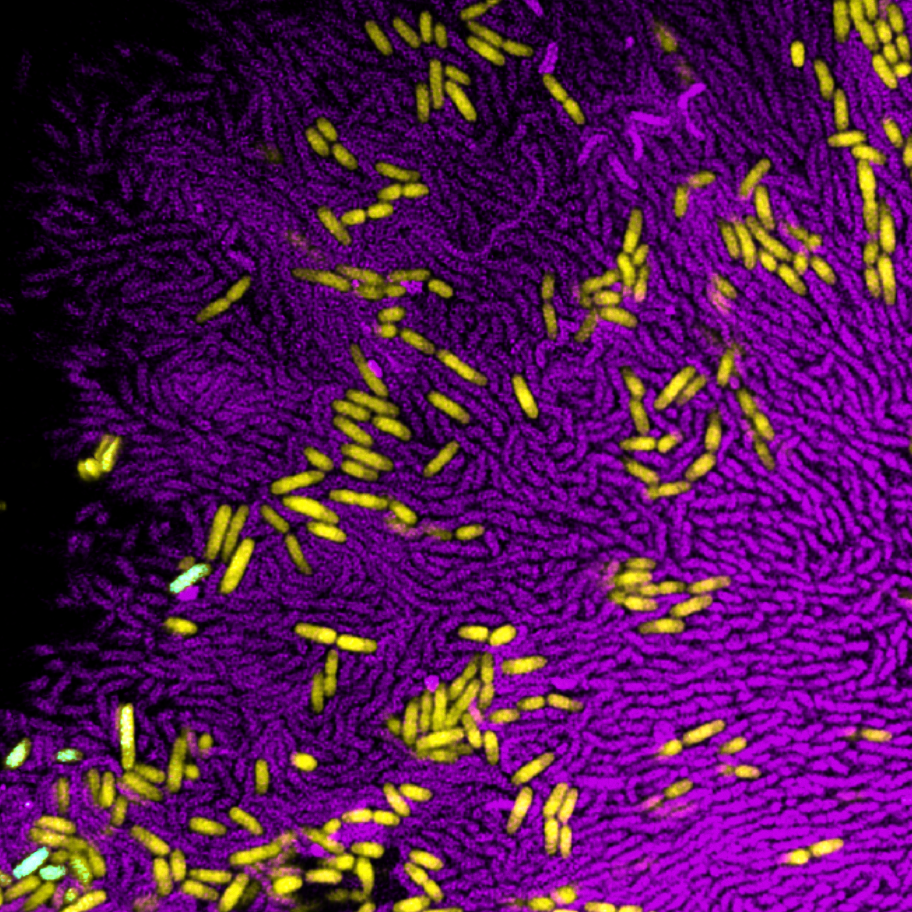
Exposure to viral parasites, called bacteriophages, is a ubiquitous feature of bacterial life. Bacteria-phage interaction has been studied for decades, but we know relatively little about how these interactions transpire in a biofilm context at cellular resolution. We use novel methods in live infection tracking, microscopy, and individual-based simulation to make headway in this area, which unites spatial disease dynamics, host-parasite coevolution, and microbiome community ecology.
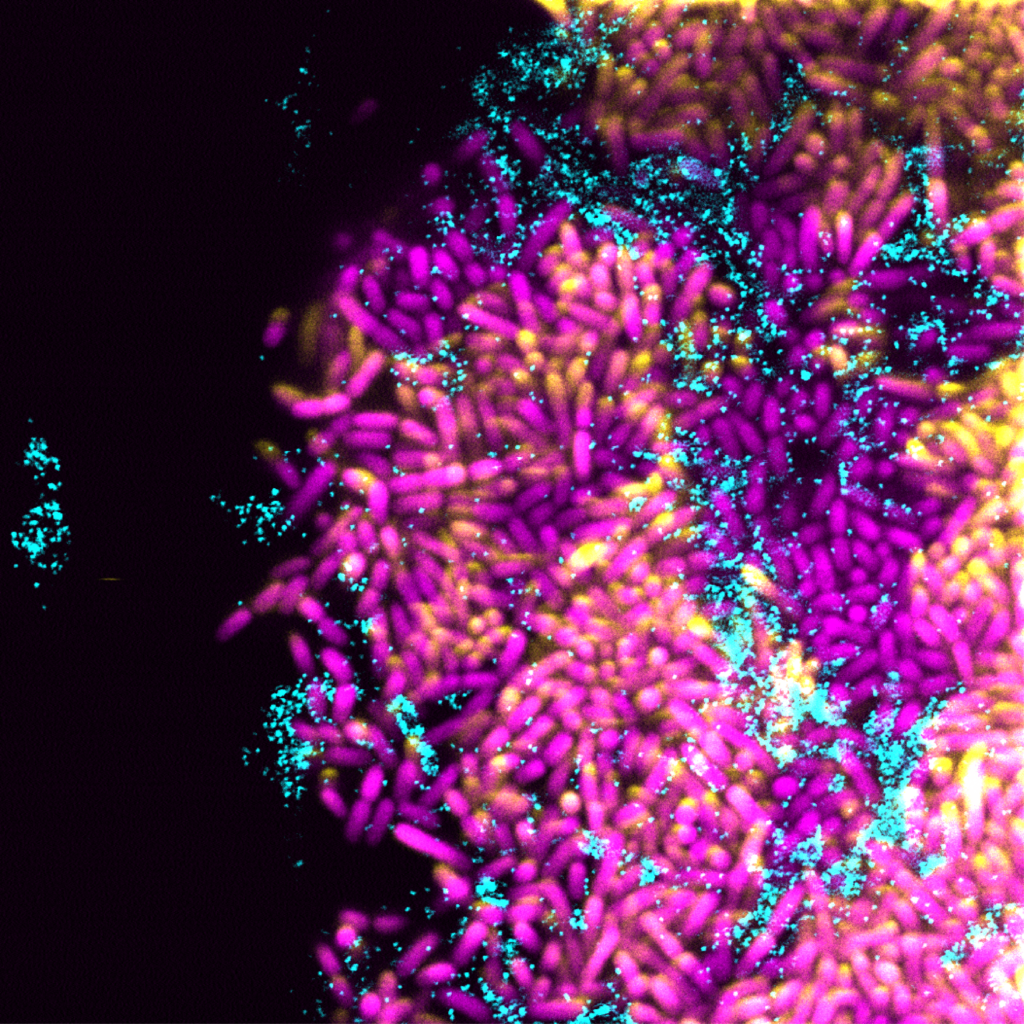
Spatial Ecology of Bdellovibrio bacteriovorus Predation
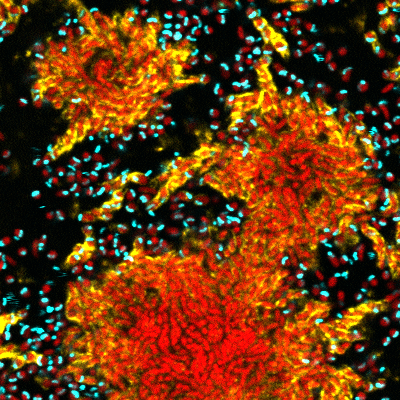
The bacterial predator Bdellovibrio bacteriovorus has a life cycle very similar to that of an obligate lytic bacteriophage: they enter the periplasm of host Gram-negative bacteria, digest the host cytosol contents by secreting extracellular enzymes, and use the resulting raw materials for growth and replication. Very little is known about the cellular scale predator-prey dynamics with which B. bacteriovorus and its relatives impact biofilm-dwelling prey. With collaborator Daniel Kadouri at the Rutgers School of Dental Medicine, we have developed models for studying this fascinating predator and how their biofilm-building prey use collective behavior to protect themselves from being found and and consumed.
Theory of Microbial Interactions Under Spatial Constraint
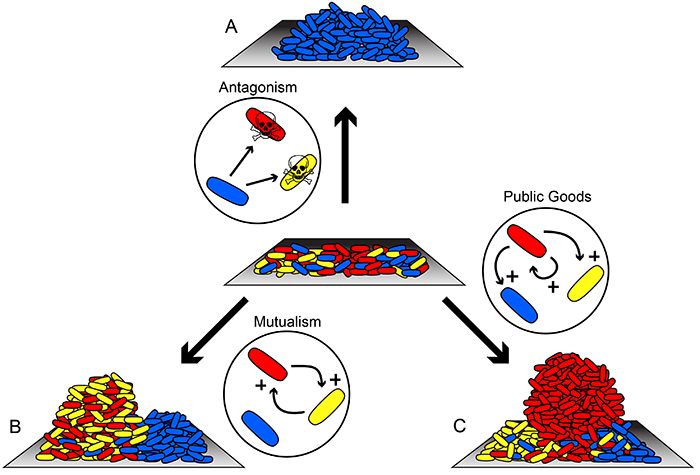
While embedded in biofilms, bacteria of different strains and species become spatially assorted in various ways depending on environmental inputs – such as fluid flow, surface topography, and nutrient availability – as well as the many types of interactive bacterial phenotypes, which are extraordinarily diverse. We develop conceptual and simulation-based theory to understand how social evolution occurs in biofilms, and what implications this might have for biofilm functioning at larger scales.
